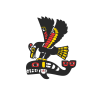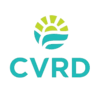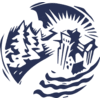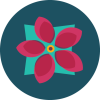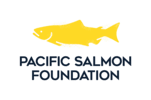Peter Rusland, Cowichan News Leader Pictorial, October 05, 2012
 All fishing has been banned on the Cowichan River while officials try to rescue this year's run of chinook salmon from drought conditions.
All fishing has been banned on the Cowichan River while officials try to rescue this year's run of chinook salmon from drought conditions.
Gerald Thom, of the Cowichan Lake and River Stewardship Society, stressed the fishing prohibition — including Native spearfishing — was ordered after a conference call between agents with local, federal and provincial governments, Cowichan Tribes, and local stakeholders so fish collection could happen in Cowichan Bay estuary and the lower river.
Flows in the heritage river were also pinched Friday at Cowichan Lake's weir to five cubic-metres per second, from 6.5 cm/sec, to store water for pulse tactics Tuesday and Wednesday.
"We're considering a pulse, a quick release of water over a 36-hour period at about 13 cm/second.
"We cut down the flow so we have more water to try the pulse.
"Chinook aren't moving up the river, but just holding, so the pulse will hopefully get them moving up the river. They're using two strategies: pulse, and trap-and-truck.
"Everyone in the valley's on board, which is the key," he said Friday morning during the salmon-saving mission.
Trap-and-truck involves catching fish using nets, then hauling them upstream.
"Fish are being taken from the lower river, between the black bridge and Cow Bay, depending on where they're pooled. "They're moving them to Sandy Pools or Skutz falls, depending on where the water's pooled there."
To further help struggling chinook, Tribes' counting fence was pulled Friday "as Cowichan Tribes considered it a barrier."
To date, 449 adults, and 346 jacks (juvenile males) had been counted at the Boys Road Cowichan Hatchery, "and they've collected 305 males, 362 females, and 15 jacks."
Hatchery fish may be taken upstream; many will be used for restocking the river.
"Eggs will be kept in the hatchery," explained Thom.
"They have capacity for more than a million eggs in the hatchery."
A team of biologists is swimming the river during the weekend and early next week to check distribution of adult chinook, and monitoring their progress, Thom told the News Leader Pictorial.
"It's a very inexact science.
"The river changes every year so it's somewhat experimental."
That experiment is being managed by folks with federal Fisheries and weir licence-holder the Crofton mill, forest and lands ministry's John Baldwin, the Cowichan Valley Regional District, Cowichan Tribes, Kate Miller, and Cowichan Watershed Board members.
"The expected run is 2,000 to 3,000 chinook, so at this point we have about half of them in the river, or in the hatchery," Thom said.
But others are hanging in the lower river or estuary, hence the pulse "to get them away from sea lions."
Thom cooled recent headlines claiming the river's immediate danger of going dry and killing the fish.
"We have 3 1/2 weeks to get to zero storage (Cowichan Lake) and it doesn't mean we're out of water — the river starts to decrease in flow from there," he said.
"If we get rain it's wonderful — we gotta pray for that — and the problem could disappear for this year.
"Two or three days of good rain is needed, not just a shower."
Thom said all parties realize lakefront property owners are worried about storing water and flooding their land.
"Property rights are a concern and the water board's going through a process in the next year to deal with those concerns.
"All views have to be respected. It's a complex issue, but we all have to work together for the health of our ecosystem."
 Email
Email